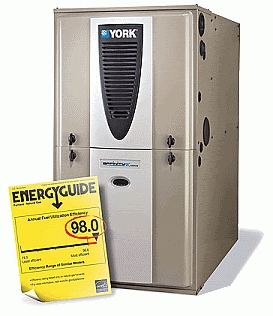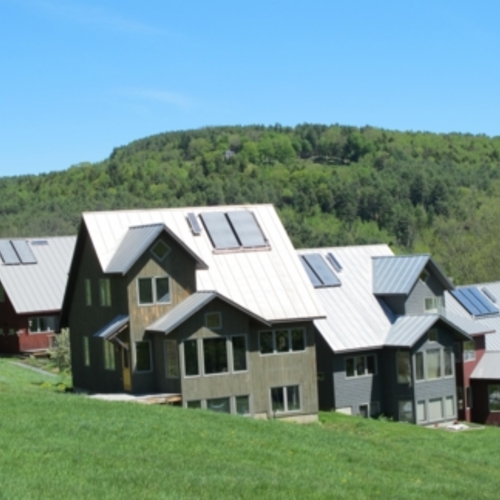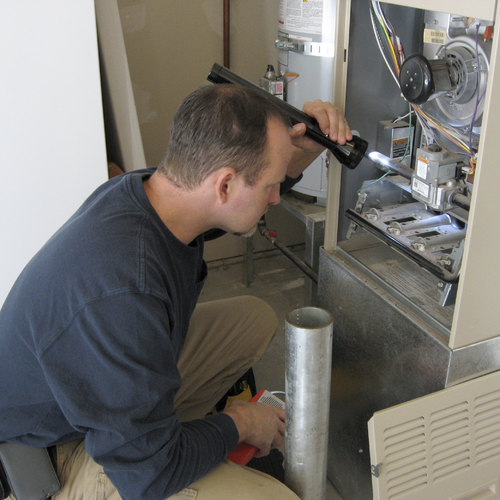
Image Credit: York/Johnson Controls
If your heating system is old and inefficient, now is a great time to replace it with a new, high-efficiency model. There are eight months remaining to take advantage of the 30% federal tax credit that’s available for installing energy-efficient gas- or oil-fired furnaces and boilers, as well as air-source heat pumps.
The American Recovery and Reinvestment Act of 2009, a key part of the federal economic stimulus program, extended a 30% federal tax credit for certain home energy upgrades through 2010. The tax credit covers both the equipment and installation cost and is capped at $1,500. In other words, you can get the full 30% tax credit for a system costing up to $5,000.
To achieve the tax credit, the system has to achieve a specified level of energy efficiency. Natural gas and propane furnaces must have annual fuel utilization efficiency (AFUE) ratings of 95% or higher. Oil furnaces as well as natural gas, propane, or oil boilers must have AFUE ratings of 90% or higher. (A furnace heats air, which is distributed through warm-air ducts and registers, while a boiler heats water, which is distributed through baseboard or wall radiators.)
Be aware that these are really stringent standards; not all manufacturers offer eligible products. Very few oil-fired boilers or furnaces meet the 90% AFUE threshold, and 95% is pretty rigorous for gas furnaces.
Air-source heat pumps, must meet specific requirements for HSPF, EER, and SEER (all specific measures of energy performance). Standard (packaged) air-source heat pumps must achieve the following: HSPF≥8.0, EER ≥ 12.0, and SEER ≥ 14.0. “Ductless mini-split” systems, which are growing rapidly in popularity, must achieve somewhat higher performance: HSPF ≥ 8.5, EER ≥ 12.5, and SEER ≥ 15.0.
To earn the federal tax credit for one of these systems, the installation has to be completed by December 31, 2010. You have to use IRS Form 5695 and also provide a “Manufacturer’s Certification Statement” certifying that the furnace, boiler, or heat pump qualifies for the tax credit. This statement should be available from the installer or manufacturer.
This tax credit–unlike the solar and ground-source heat pump tax credits–only applies to a home that you own and that serves as your principal residence. The residence can be a house, mobile home, manufactured home, co-op apartment, or condominium. You cannot take advantage of this tax credit for heating system replacement on a second home or rental property.
Tax credits are much better than deductions, because they directly reduce the taxes you are paying, rather than reducing your taxable income. If you are in a 25% tax bracket, for example, a $1,500 tax credit is comparable to a deduction of $6,000. Only one $1,500 tax credit can be earned for energy efficiency improvements, so if you already took advantage of this tax credit on your 2009 taxes, you are ineligible.
While you will earn a tax credit, the real benefit from replacing an inefficient heating system with a new, more efficient one, will be the energy savings that result. If you’re spending $2,000 per year on heat today using a gas furnace with a 78% AFUE efficiency, and you replace it with a 95% AFUE model, you should save about $360/year on fuel (calculated using BuildingGreen’s Fuel Cost Calculator). If the cost of the new furnace was $5,000 ($3,500 after the tax credit), the simple “return on investment” is 10.3%–not a bad return, compared with what you would earn with that money sitting in the bank!
The bottom line: if your current heating system is getting old or is inefficient, this summer is a great time to replace it. Contact your heating contractor and/or other suppliers about eligible products.
A great resource for information on both federal and state incentives for efficiency and renewable energy is the Database of State Incentives for Renewables and Efficiency (DSIRE).
I invite you to share comments on this blog.
Alex Wilson is the executive editor of Environmental Building News and founder of BuildingGreen, LLC. To keep up with his latest articles and musings, you can sign up for his Twitter feeds.
Weekly Newsletter
Get building science and energy efficiency advice, plus special offers, in your inbox.













0 Comments
Log in or create an account to post a comment.
Sign up Log in